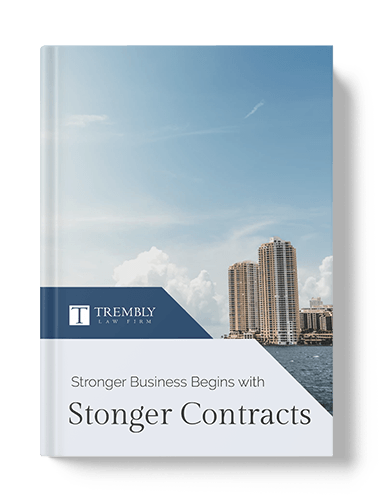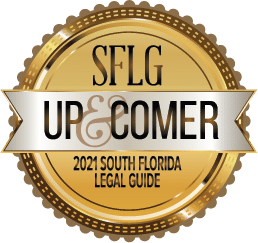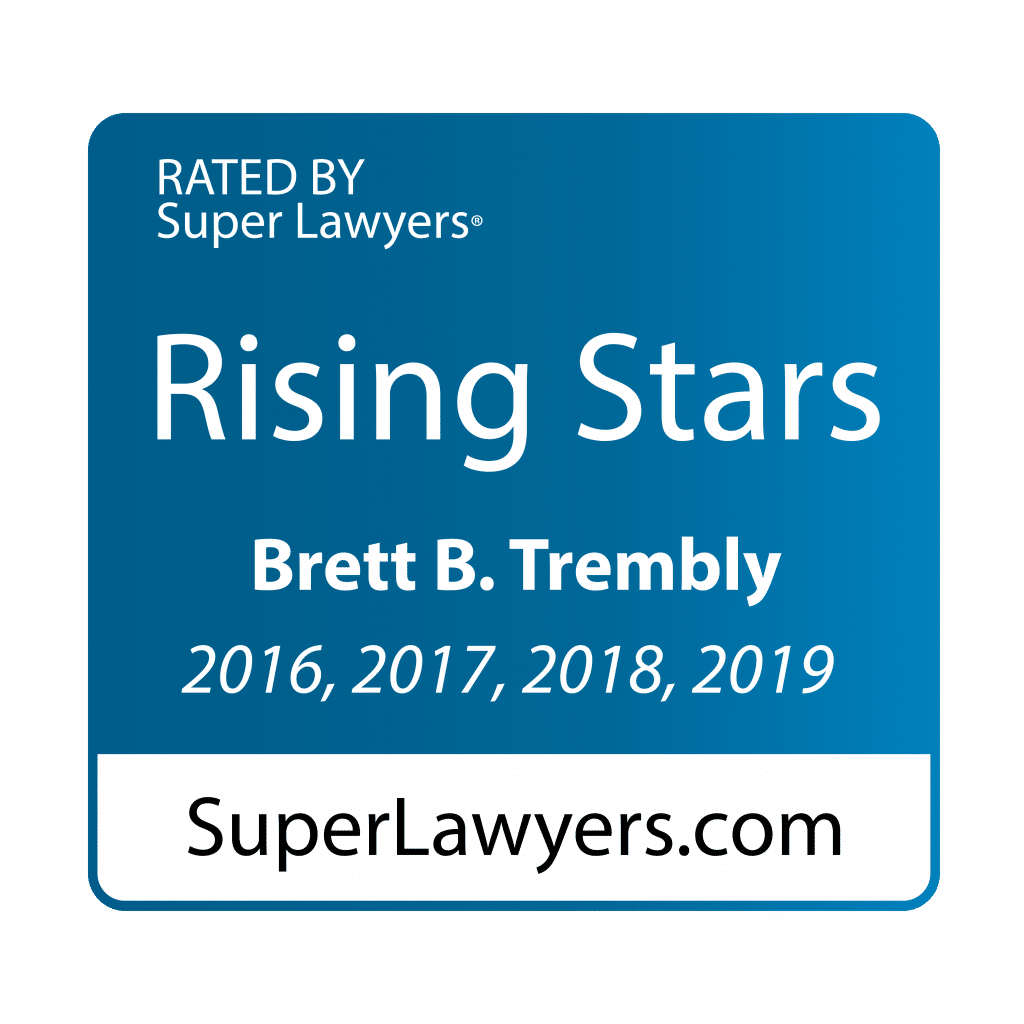Introduction
Several countries are placed under complete lockdowns and at a standstill due to the Coronavirus pandemic, impacting all phases of life and government. Small and medium sized businesses are severely affected due to these lockdowns. Employers have mandated employees to work remotely. While this method might minimize the spread of the virus, it may also present a risk in terms of protecting trade secrets and other sensitive company information. Since the coronavirus has caused significant disruption in businesses, there is also the possibility of companies downsizing, as well as employees and executives quitting, which means that non competition or non solicitation agreements will be put to the test.
I. Definition of Non-Compete Clause/Agreement
Also referred to as “restrictive covenant,” a non-compete agreement is a clause in which one party, usually an employee, enters into a contract that agrees not to start or get into a similar profession or trade in competition against another party, usually the employer. Such agreements also prohibit employees to disclose operations and trade secrets, and exploit confidential information in order to gain competitive advantage.
Do not keep your non-compete agreements a secret. Aside from letting your employees know about it, it is also a wise move to let your competitors know it too, so they won’t be tempted to poach your employees. A company that hires an employee from a rival company with a non-compete agreement may be subjected to a lawsuit in violation of the non-compete agreement.
II. How Does It Work?
Non-compete agreements are signed at the beginning of a business relationship between two parties (usually between employer and employee). This contract is used to safeguard the employer over certain actions by the employee in the event of separation from the company on the assumption that the former employee might work for a competitor or start a business that might compete with the company.
Non-competes specify clauses stating that the former employee will not work for any competitor upon termination or resignation. Employees are also prohibited from working for a competitor regardless if the new job involves the disclosure of trade secrets and other essential company information.
These agreements are primarily used to ensure that employees will not use any information learned during their employment to start a business of their own and compete with the employer as well as ensure the employer its place in the market.
Non-compete agreements may include a specific length of time that binds the former employee to the contract, the geographic location where they can work or practice, and/or the same industry.
The enforceability of these non-compete agreements should be analyzed on a case-by-case basis. Under Florida law, employers may enforce such agreements as long as they are within a reasonable amount of time and geographical area, and mainly to protect the employer’s business interests and in no way should suppress former employees from furthering their careers.
III. Non-Compete Agreement Components
Non-compete agreements vary from company to company, from case to case, and are tailored specifically for each employee. In order to be considered legally binding, aside from the names and addresses of the involved parties, the typical components of a non-compete agreement includes the following:
A. Scope
The non-compete agreement should indicate the specific work or duties that the employee is restricted from doing. It should detail out what the employee is allowed to do and not do. There should be no restriction against finding employment in an entirely different field, for instance, an executive of a company being hired by a university.
B. Duration of Restriction
Non-competes typically contain a clause that specifies for how long the departing employee must wait before finding new employment under the same field. The standard period of time is from two to five years depending on the type of job the said employee held.
The agreement should set a realistic timeframe, specific dates when the employee will be barred from working in a competitive sense, and the date on which the agreement will commence. Generally, the court considers restrictions from six months up to two years as reasonable, and even when restrictions are found to be unreasonably broad, the court may modify the agreement to dictate more reasonable restrictions.
C. Geographic Location
Another legally binding limitation for a non-compete agreement is a clear, realistic region where employees may or may not work. A reasonable geographic location varies in relation to the length of time and nature of the employee’s duties for it to be enforceable. So, there is a possibility for a broad geographic location to be enforced if the restriction is for a short amount of time, say a month. However, if the same geographic scope is coupled with a long period of time of prohibition, then it is more likely to be deemed unenforceable by the court. Generally, the court will not permit a non-compete that forbids an employee from working in a location where the employer does not do business.
D. Consideration
A non-compete agreement should details as to how the employee will be compensated for agreeing to the employer’s terms. This could be in the form of signing bonus, promotion, or any specific perk. However, a promise of continued employment should not be considered acceptable as a consideration.
E. Compensation
This specifies the type of compensation the employer should receive in the event the former employee violates the agreement.
F. Specified Competitors
There are instances where a non-compete agreement will be so detailed that it contains the names of the companies from which the departing employee is not allowed to seek employment from.
G. Reason for Enacting the Agreement
The agreement must point out a valid business reason for existing. It cannot simply be used as a tool to prevent employees from leaving for a better paycheck or job position.
H. Protectable Interests
A non-compete agreement must identify protectable interests such as trade secrets, confidential company information, clients list, customer relationships, etc., and should acknowledge the following terms:
- Such interests are vitally important to the business
- A breach in the agreement will being irreparable harm to the business
- In the event of a breach by the employee, the employer is entitled to an injunctive relief
- The employee has surrendered all materials and documents with confidential information and trade secrets
An airtight and detailed non-compete agreement helps protect your business from potential civil litigation brought by unhappy former employees. The best course of action is to consult with an attorney adept in employment law in dealing with these agreements to ensure that it is reasonable and will hold up in court.
IV. Why Your Business Need These Non-Compete Clauses
Non-compete agreements come in all forms and sizes, and the reason why employers should have one or more are equally diverse. Here are some reasons why your business need a non-compete agreement:
A. Protection Against Competition
Competition may be healthy for business, but it is also an important element that forces employers to use every possible means to keep their customers and business afloat. Competition can be the driving force for unethical business practices when businesses or individuals do whatever it takes in order to get ahead of others. The use of non-compete agreements helps protect business owners against unethical or unnecessary competition from former owners, investors, executives, or employees. This protection allows an employer to hire, contract, and operate their business without the fear that their business knowledge and advantages will be used against them.
B. Protecting Crucial Information from Disclosure
Oftentimes, a business has a proprietary way of doing things in their industry. These trade secrets and other business-related information are crucial in setting them apart from the competition. A trade secret can be anything from a formula, program, method, technique, or process with value that is not generally known and therefore being kept secret.
Typically, companies invest a great deal of resources into the training of employees in order to maximize their productivity within the company. These trainings give employees access to critical information crucial in maintaining company operations as well as where it places in the industry.
Maintaining confidentially by using a non-disclosure agreement might not be enough. So, using a non-compete agreement that binds employees with access to privileged information from disclosing confidential business information or working under a competitor post-employment is an excellent way to help protect such information. A company’s ability to maintain the secrecy of these vital information can define business success or failure.
C. Protect Customer Relationship
Customer relationship is the heart of a business. Building and maintaining an outstanding client relationship with existing and potential clients can set the company up for repeat business. Since some businesses place client relationships under some employees and have gained the customer’s trust, there is the possibility of losing key customers when those employees are separated from the company. It is important to rebuild customers’ trust and to show that other employees are equally as capable of serving their interests. This is especially true with small businesses. A small business simply can’t afford to lose its customers.
D. Enhance Client Confidence
Since clients entrust their personal and/or business information to a company, it is the company’s duty to protect these information. Customers have to ensure that departing employees are not going to take their information when they leave. Requiring employees to sign non-compete agreements and restricting them from using and sharing confidential information is a good way to build client confidence that their data are safe.
E. Help Retain Employees
Having a non-compete agreement in place can help prevent or impede employees from jumping ships. Additionally, since it is human nature to establish roots where they work, having a binding contract may be enough to keep high-caliber employees as non-competes prevent former employees from working in the same geographical area as the business.
F. Safeguard a Business From Potential Litigation
Lawsuits are without a doubt expensive. While there are no contracts that can eliminate the expense associated with litigation, you still have the choice to protect your business’ interests through legal action and minimize the damage. Non-compete agreements give you an opportunity to reach an agreement with your employees that can be beneficial if ever litigation becomes necessary.
V. Damages for Breach of Non-Competes
A. Injunctive Relief
Injunctive relief is the most commonly sought and granted type of relief for a breach of non-compete agreements. In most cases, the former employer rather than proving that there are damages, they ask the court to stand by the non-compete agreement and have the employee sever their ties with the new employer. Under Florida law, the new employer is accused of intentionally interfering with the former employer’s non-compete agreement with its former employee, or “tortious interference with a contractual relationship.”
B. Compensation for Profit Loss
There are instances where the former employer seeks damages from the former employee. One common form is compensatory damages or compensation for profit loss. However, such profit loss should be:
- fairly within the contemplation of the involved parties,
- caused by the breach of contract, and
- can be proven by reasonable certainty.
C. Punitive Damages
This is another popular type of damages which should be supported by strong evidence showing malicious conduct.
D. Liquidated Damages
Non-compete agreements often contain a provision for liquidated damages where the involved parties set a specific amount of damages prior to the breach of contract. It is not unusual for both parties to agree to such a provision, for it may be difficult to calculate the actual amount of monetary damages incurred by the breach. Since liquidated damages are included in the non-compete contract, the new employer is not obliged to shoulder the damages unless they have signed a contract directly with the former employer. However, these clauses should be deemed reasonable before the court requires a party to pay for it.
E. Other Damages
The successful party may ask for the unsuccessful party to shoulder the court costs and attorney fees. Though this also depends on whether the court feels that the unsuccessful party’s actions warrant them paying for such costs, such actions may involve buying the case or making several arguments frivolously.
Depending on the evidence presented, damages may be maximized or minimized.
VI. Preparing for Non-Compete Litigation
Non-compete litigation is typically fast-paced and expensive. Employers must act quickly when they suspect that an employee (current or former) is violating a non-compete agreement. However, it is important to provide that there is sufficient factual and legal support before taking legal action. Here are the steps an employer can take in initiating non-compete litigation.
A. Investigating a Potential Violation and Gathering Relevant Evidence
Employers often learn about a non-compete agreement violation from clients/customers or employees. Instead of relying on second-hand knowledge and hearsay of a suspected violation, an investigation should be conducted in order to evaluate whether an employee’s conduct violates the non-compete agreement, and gather evidence to be used if the employer decides to pursue legal action.
1. Investigating a Suspected Violation
In case of a suspected violation, an employer should act quickly due to the nature of the conduct. Here are some reasons why an employer needs to act quickly:
a. The employer takes any suspected violation seriously to demonstrate that they have a legitimate business interest affected by said violation.
b. The employer wants to minimize damage to the business as a result of an employee’s competitive activity.
c. The employer wishes to preserve any potential evidence of the employee’s conduct.
Courts take into consideration how quickly an employer acted upon a suspected violation in order to evaluate whether there is a legitimate business interest. Additionally, it can be difficult to argue that an employee’s conduct resulted in irreparable harm to the business that courts factor in when issuing an injunction. If the employer delays too long, there’s the possibility that the departing employee will raise laches as a defense to any legal actions taken by the employer.
2. Gathering Relevant Documents
Employees typically sign a number of documents during their tenure in a company. Some of these documents may reference, combine, or overrule obligations contained in other documents. So in the event of a suspected violation of a non-compete agreement, employers must gather all agreements or documents signed by the employee that might affect their post-employment restrictions.
While many non-competes are stand-alone agreements, there are instances where post-employment restrictions are also found in agreements such as employment contracts and separation or severance agreements. For best practice, a thorough examination of an employee’s personnel file, and if relevant, employee benefits files and corporate transaction files.
Employers are also advised to retain all agreements with post-employment restrictions, even those that have lapsed, as they may still be useful. There are instances where employers seeking to enforce non-competes find that they either have unsigned copies or only an executed signature page, so they should ensure that they have fully executed copies. Employers can require employees to sign updated non-competes that they can use as evidence that they have a legitimate business interest to enforce the non-compete.
3. Conducting Witnesses Interviews
An investigation into a suspected violation should include interviewing witnesses. Witnesses may include individuals who work with the employee and customers or clients. Coworkers can attest to the employee’s conduct as they may have witnessed the violation of the non-compete or if the employee has been in contact with customers or clients who they may have solicited for business.
Clients and customers can also confirm whether or not the suspected employee has contacted them. However, contacting clients or customers may not be appropriate in all cases. Employers typically do not contact their clients or customers unless the testimony is necessary to support the employer’s claim or the client has initiated contact with the employer about the unwanted solicitations from the employee.
Obtaining affidavits from coworkers, clients, or customers can bolster an employer’s application for injunctive relief or a request for damages. Additionally, a signed affidavit can put the employer’s mind at ease that witnesses would not change their story at a future date.
4. Preserving Electronic Evidence
Employers can obtain valuable information from a suspected employee’s computer such as information about which electronic files they accessed, transferred, printed, or deleted, which could be incriminating evidence of impermissible competitive activity. Employers suspecting an employee is violating a non-compete should:
-
- Shut off the employee’s access to the computer’s system and ensure that the said employee can no longer access the premises post-employment.
- Immediately preserve the employee’s emails, computer hard drive, and any additional electronic devices such as company-issued mobile phone and laptop.
- Review the building’s security footage and records of building logs for any suspicious activity such as late hours entrance to the building or copying/printing out large volumes of materials.
- Hiring a computer professional to make forensic images of the employee’s hard drive and other electronic devices which can help the employer to defend against claims for corruption of evidence.
- Send a litigation hold notice to involved employees.
B. Assessing the Enforceability of a Non-Compete
An employer must determine whether or not the non-compete is enforceable. Before initiating legal action, here are the key steps an employer can take to assess the enforceability of a non-compete.
1. Reviewing the relevant contract language
Employers should examine closely the language of all agreements signed by the departing employee that contain post-employment restrictions. Key considerations in this inquiry include whether the non-compete:
-
- Is still in effect
- Is superseded by any other agreement
- Has been waived or modified
- Prohibits the employee’s conduct based on the non-compete language
- Contains a severability clause
- Includes a choice of law or choice of venue provision
- Contains a liquidated damages clause
2. Determining which state’s law governs enforcement
It is vital for the employer to determine which state laws govern the enforceability of the non-compete and what the standard is in that particular state. Employers should familiarize themselves with any choice of law and choice of venue provisions. Involved parties of a non-compete agreement often include these provisions in order to express their expectations about which state’s law governs the enforceability of a non-compete and where any litigation concerning the non-compete will be filed.
However, in the absence of a choice of law provision, courts consider which state has the most significant relationship to the dispute and typically consider the following factors:
-
- Where the employer is headquartered.
- Where the employer’s offices are located.
- Where the employee resides.
- Whether the employee worked out of one office or multiple offices or works remotely.
- Whether the employee visited other offices of the employer or customers in other states.
- Whether the employee accessed the employer’s network from outside the office.
- Where the employer’s network is located.
3. Evaluating enforceability under state law
For a non-compete agreement to be enforceable, it must satisfy the specific requirements of contract law and state law for non-compete agreements. The key issues an employer should consider when evaluating a non-compete agreement’s enforceability under state law are as follows:
-
- Is there sufficient consideration?
- Does the non-compete meet specific state law requirements?
- Does the employee have valid defenses to enforcement?
4. Reforming overly broad non-competes under state law
Employers should take into account the enforceability of a non-compete agreement and to what extent state laws permit its modification for it to become enforceable.
C. Factors to Consider Before Initiating Legal Action
Employers that are thinking of taking legal action to enforce a non-compete should consider if:
- There is sufficient evidence that the suspected employee agreed to the non-compete agreement. Such evidence could be a signed hard copy of the contract or an electronic transmission with the employee’s approval.
- There is enough evidence demonstrating the need for enforcement such as first-hand witnesses or a business representative testifying to the legitimacy of the employer’s business interests.
- Ensure to take steps in enforcing the non-compete because failure to do so may jeopardize the ability to enforce similar non-competes in the future.
- There is a possibility that the litigation may create negative publicity which may endanger the employer’s business.
- The ordeal may worsen employee morale or cause other employees to resign.
- Be prepared to commit the time necessary to push through with litigation since things like written discovery and depositions are not only time-consuming but expensive as well.
- Take into consideration the costs associated with defending any potential counterclaims made by the employee as this might outweigh the potential benefits of enforcing the non-compete, or that the counterclaim may reduce the employer’s ability to enforce a non-compete under the same jurisdictions.
- There is a risk that an action to enforce the non-compete will be unsuccessful depending on how confident the employer is that the non-compete is enforceable and that the employee in fact breached it.
- If the employer loses, there is a possibility that other employees may be encouraged to ignore their own non-compete agreements.
- The employer may take a position during the litigation that could later be used against them if they defend a non-compete case.
D. Options for Enforcing a Non-Compete Through Legal Action
Employers seeking to enforce a non-compete through legal action have several options available.
1. Sending a Cease and Desist Letter
A cease and desist letter can be a relevant preliminary step to legal action or a less expensive alternative which can be used as:
-
- Reminder of employees contractual obligations.
- Warning that the employer plans to take legal action if employees do not stop violating the non-compete agreement.
- Demand that employees preserve all potentially relevant evidence such as electronic files and data.
2. Bringing a Declaratory Judgment Action
If the business has not suffered any harm yet, employers may seek a declaratory judgment to prevent future breaches and harm their business. Moreover, filing for a declaratory judgment before the employee has certain strategic advantages, such as giving the employer the upper hand in choosing the timing and forum for litigation.
3. Filing a Legal Action for Damages
Like other types of litigation, non-compete litigation typically begins with a complaint filed by a party. Here are some considerations an employer must make before filing a complaint:
-
- Whether to include the employee’s new employer in the legal action.
- Where to file the lawsuit.
- Common causes of action related to a non-compete violation.
- Whether to seek temporary, preliminary, or permanent injunctive relief in addition to damages.
4. Requesting Injunctive Relief
Filing a complaint is the best course of action if an employer desires to obtain damages from an employee’s violation of a non-compete agreement. The employer’s goal is to recover any damages suffered as a result of the employee’s conduct or to prevent the employee from inflicting any additional damage to the employer’s business.
VII. Defense Strategies for Non-Compete Litigation for New Employers
For new employers, there are several strategies to consider when defending against a lawsuit seeking to enforce a former employer’s non-compete agreement.
A. Is the Non-Compete Agreement Valid?
Courts enforce non-competes on three occasions:
- The contract is narrowly drawn to protect the employer’s legitimate business interests.
- The contract is not unduly burdensome on the employee’s ability to earn a living.
- The contract is in no way against public policy.
B. Consider Filing a Declaratory Judgment Against the Former Employer
Consider striking first by filing a declaratory judgment action against the former employer to declare the non-compete unenforceable. This strategy forces the employer to defend the validity of the non-compete litigation and puts the plaintiff in control. However, it is important to evaluate beforehand any potential counterclaims the former employer may bring once sued.
C. Assert the Unclean Hands Defense
An unclean hands defense is where a defendant claims a plaintiff is not entitled to relief because of their misconduct. Such conduct that constitutes unclean hands may include failure to perform under the contract terms, fraud, coercion, or committing a crime.
D. Potential Tort Liability for Attempting to Enforce an Unenforceable Non-Compete
Applying maximum pressure on a former employee to comply with the non-compete agreement by sending demand letters to the new employer to terminate their employment can give rise to tort liability.
The tort of tortious interference requires a plaintiff to establish the following:
- The existence of a valid contractual relationship or business expectancy.
- Knowledge of the relationship or expectancy on the part of the interferer.
- Intentional interference inducing or causing a breach or termination of the relationship or expectancy.
- Resultant damage to the party whose relationship or expectancy has been disrupted.
E. Be Aware of the Blue Pencil Rule
The blue pencil rule allows a court to tailor, reform, or modify an overly broad non-compete agreement to make it reasonable under the law. This legal concept allows the legally-valid, enforceable provisions of the contract to stand despite the nullification of the legally-void, unenforceable provisions. However, the revised version of the contract must represent the original meaning.
Should You Litigate or Negotiate?
Making a good decision is crucial now more than ever with the changing landscape brought by the Coronavirus pandemic. Companies have to carefully weigh the benefits of negotiating with former employees over non-compete agreements, or litigating enforceability. Until the business climate has calmed down and gone back to normal, it may be challenging to enforce a non-compete agreement.
Protecting your business doesn’t have to be a one-man battle. We, at Trembly Law can help ease the burden for you especially during this difficult time.

















